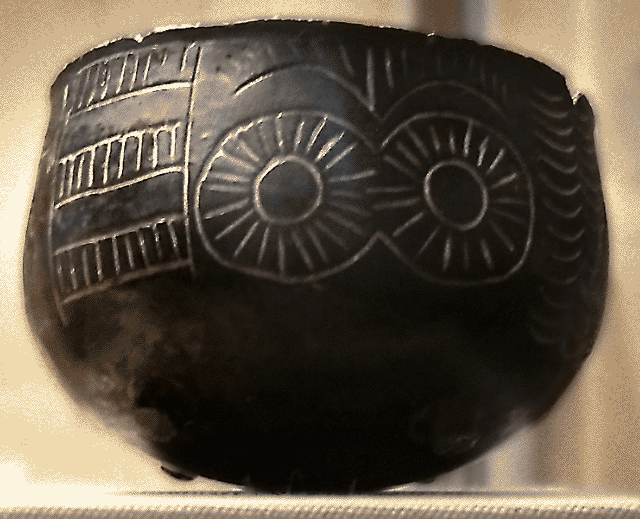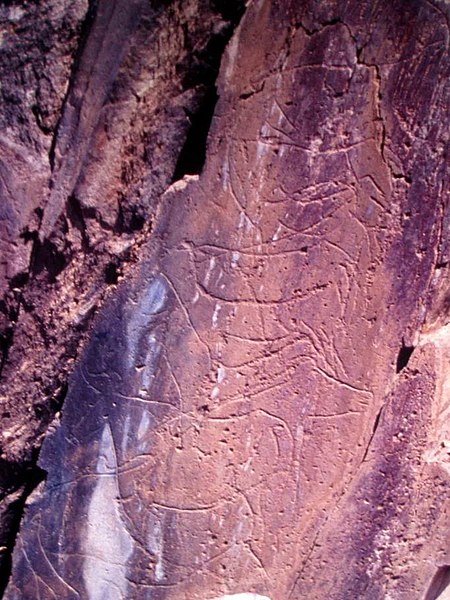This is a very interesting read for everyone interested in the Chalcolithic Era and particularly in the Bell Beaker phenomenon in one of its most crucial areas: the Lisbon Peninsula of Portugal:
João Luís Cardoso. Absolute chronology of the Beaker phenomenon North of the Tagus estuary: demographic and social implications. Trabajos de Prehistoria 2014. Open access → LINK [doi: 10.3989/tp.2014.12124]
Abstract
The complexity of the Beaker phenomenon in the Tagus estuary does not fit well with the model of three successive groups (International, Palmela and Incised Groups). The above seems to result from the nature of the settlements rather than from its chronology, as all three groups are present during the second half of the 3rd millennium BC. Therefore while artefacts of the International Group predominate in the fortified sites, the Incised Group appears almost exclusively in open sites. The Palmela Group seems of minor importance, at least in the north region of the Tagus River estuary. The remarkable antiquity of Beaker pottery found in the FM hut at Leceia (which dates from the 2nd quarter of the 3rd millennium BC, re-confirmed by AMS dating) has parallels both in the North and South of Portugal, as well as in Spain. Thus we conclude that in the Lower Estremadura (one of the most important regions in Europe for the discussion of the origin and diffusion of Beaker “phenomenon”), the Beaker social formation with its own distinct cultural characteristics, coexisted with local Chalcolithic cultures, although never merged with them.
 |
| Fig. 2. Leceia. Plan of the fortified settlement, with the location of the two Bell Beaker huts identified outside the walls. |
One of the important findings of this study is that the Incised Bell Beaker style is strictly contemporary of the International style and not a later development. The difference is that, while the International (or Maritime) high quality pottery style dominated the fortified settlements, their rural hinterland used the more modest Incised style pottery or, in some cases, no Bell Beaker pottery at all.
The author questions the traditional tripartite division between Early, Full and Late Chalcolithic (with Bell Beaker only present in the late stage) and claims a simpler division between Early and Full/Late Chalcolithic based not only on Bell Beaker presence but also of the more widespread local pottery styles (channeled and acacia-leaf decoration).
He also argues that, somehow, there was a "cultural" (or is it "class"?) division between the fortified cities and their rural hinterland, division that would reappear later in the Bronze Age. This division is largely defined by certain pottery styles and particularly quality. A possible interpretation I do is that this reflects a division between a cosmopolitan urban "elite" and a rural society that was not immersed in this cosmopolitanism of the fortified towns. The author finds no sign of conflict between the two areas.
On a more global approximation to the socio-cultural reality during the 2nd half of the 3rd millennium BC in Lower Estremadura, we may consider that if Beaker society was segmented with two clearly differentiated components, it may have corresponded nevertheless to a cultural entity as a whole with its own characteristics, at least in the region under appreciation.
The absolute chronology for the earliest bell beakers in Estremadura is 2700-2600 BCE, prior to the transition between the two Chalcolithic phases (c. 2600-2700 BCE in Leceia).
I find the following particularly interesting:
The comparison of chronometric and archaeological results described above suggests that the first Beaker productions in the region of Lower Estremadura (between about 2700 and 2600 BC) coexisted, with lower interaction, with Chalcolithic populations that lived in some fortified sites, as shown by the chronology of the FM hut at Leceia. This is the same period in which fluted pottery typical of the Early Chalcolithic of Estremadura was still used inside this fortified settlement. But in other cases this coexistence was followed by interaction with the inhabitants of those already-existing fortified sites (as found in the fortified Chalcolithic settlement of Zambujal).
This interaction persisted throughout the whole Full Chalcolithic (represented by the characteristic “acacia-leaf” ceramic pattern) until the end of the 3rd millennium BC, as can be seen in almost all the fortified settlements of Lower Estremadura.
Does this support the formation of Bell Beaker as some sort of "sect" or distinctive "ethnic group", which only in a second phase became inserted in the wider local society? One possible interpretation might be that Bell Beaker users could have arrived from elsewhere as some sort of colonists, maybe a colony of specialist traders or metallurgists or even a religious community, but, if so, where from?, because Iberia seems to have the oldest Bell Beaker dates?
Estremadura is today one of the most likely candidates for the formation of the Bell Beaker phenomenon but this paper also mentions similarly older dates in other parts of Portugal, and the same seems true for other parts of Iberia and SE France. Whatever its exact origin, it seems likely that the vibrant and often ill-understood Chalcolithic civilization of Estremadura was surely a trampoline from which the important cultural phenomenon reached other areas of Atlantic (and maybe even inland) Europe.







_01.jpg/328px-%C3%8Ddolo_de_Extremadura_(M.A.N._Inv.20572)_01.jpg)
























